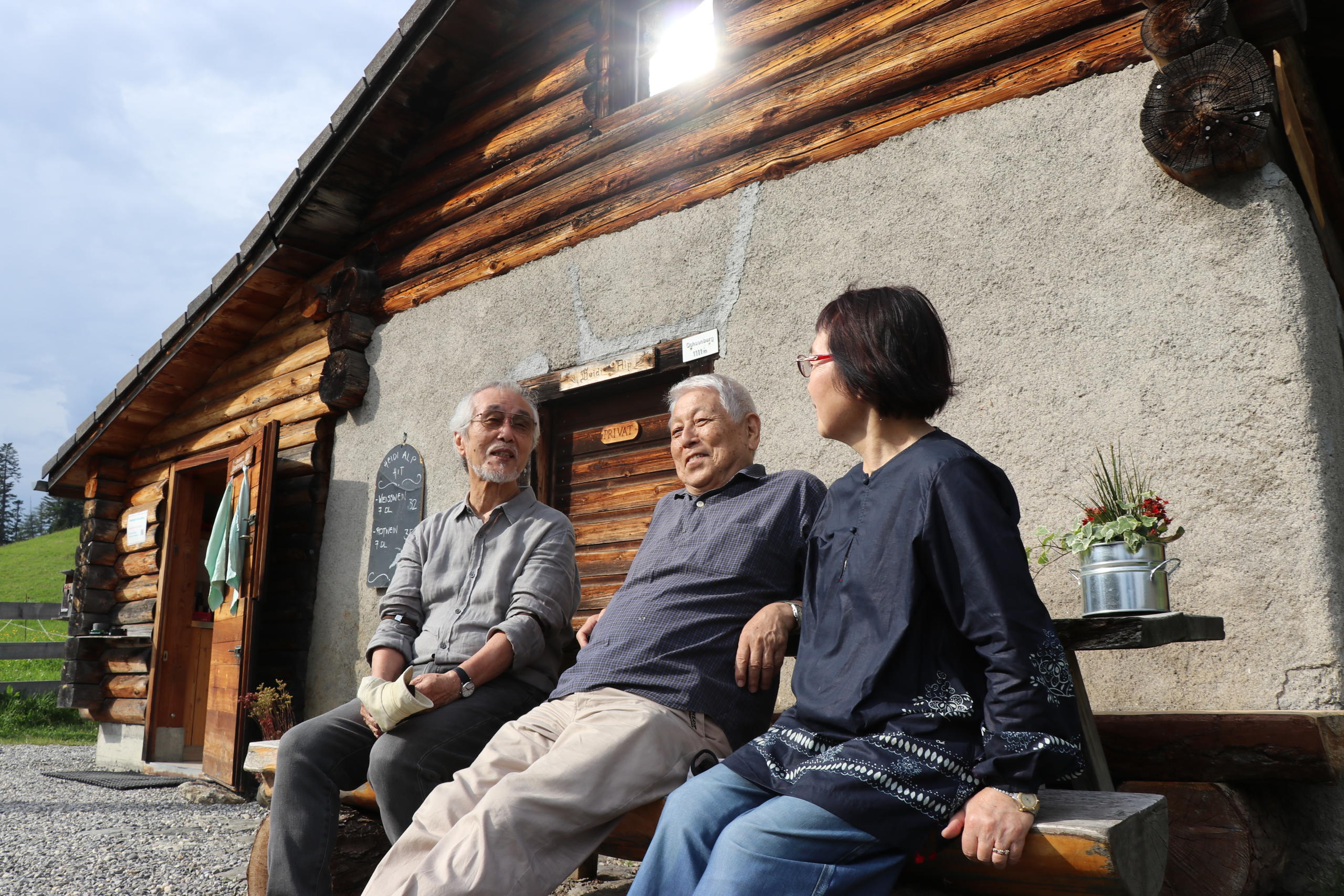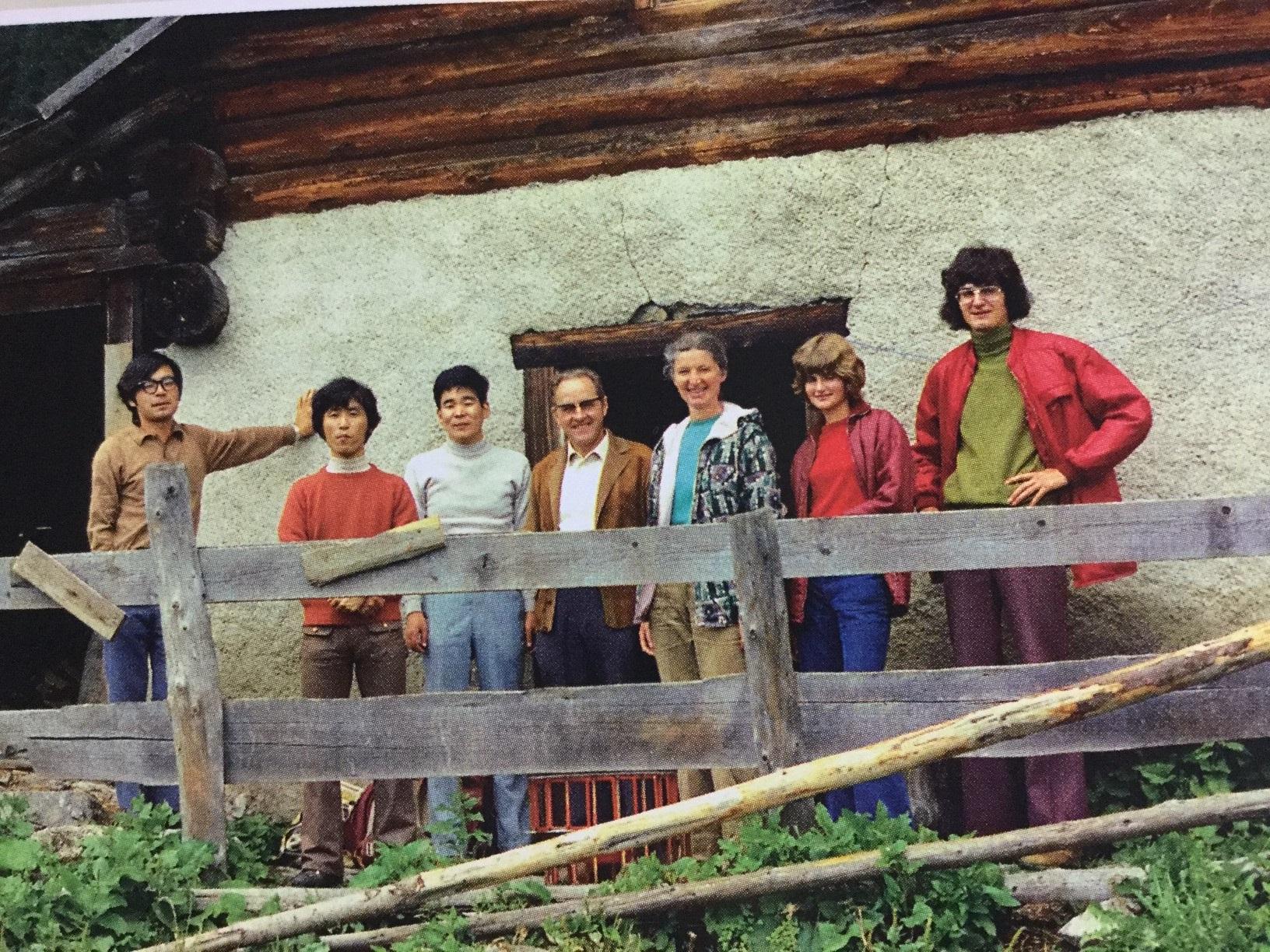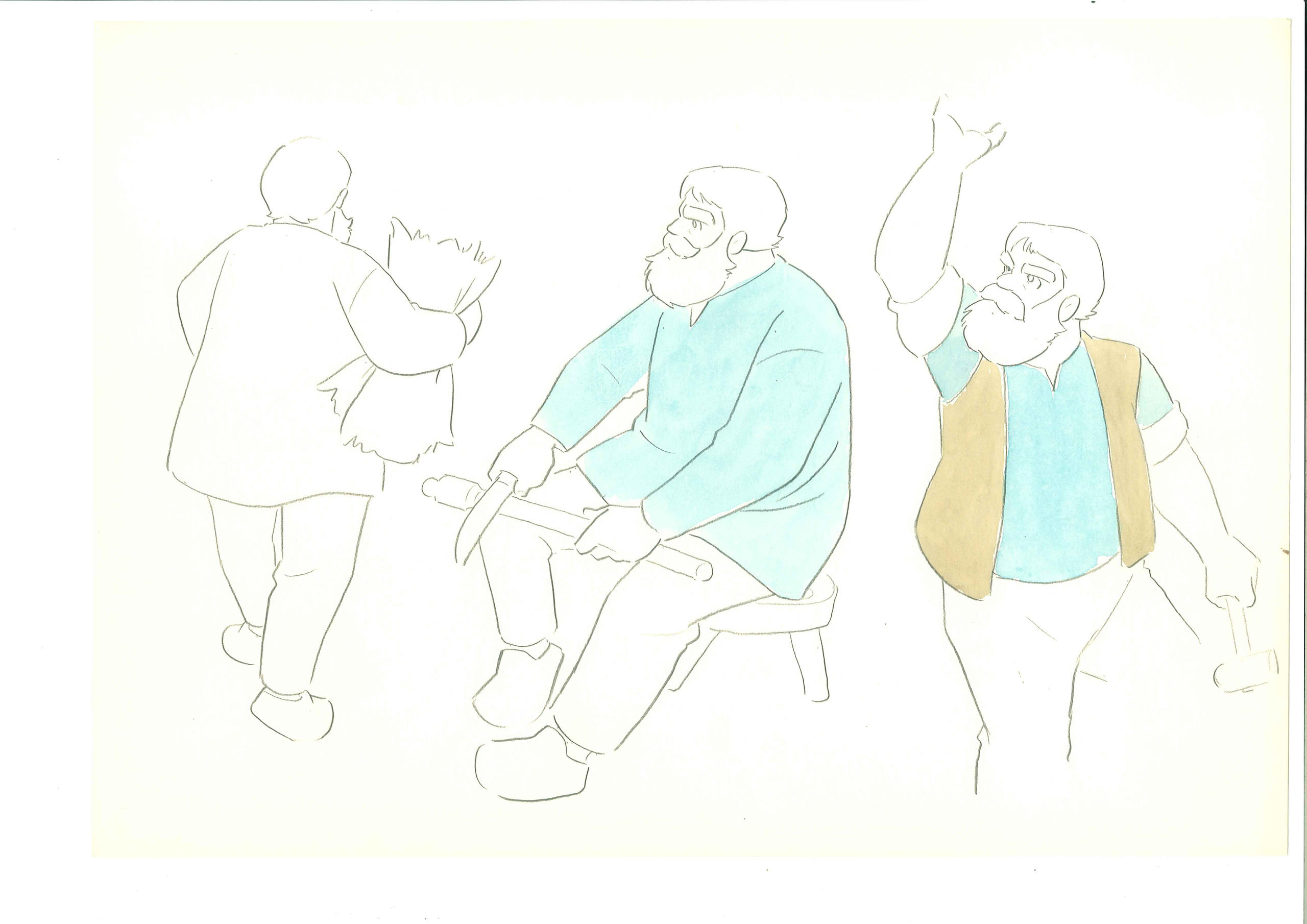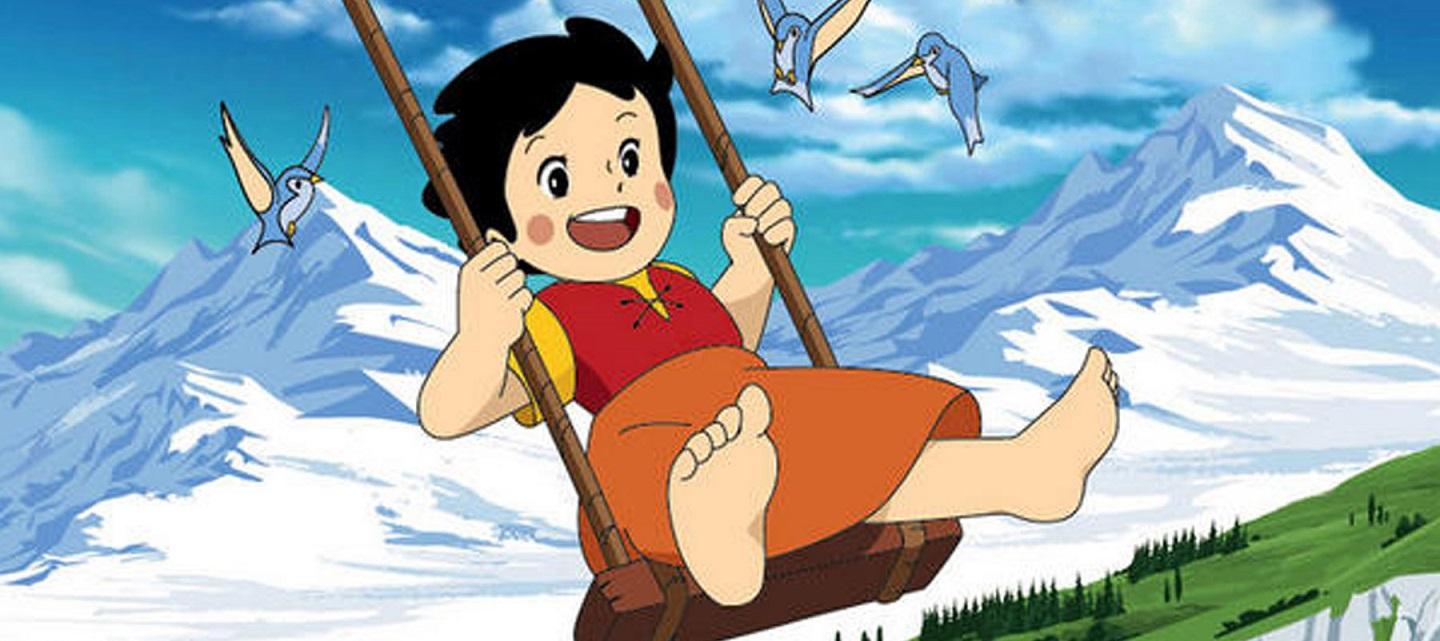
On location with Heidi’s Japanese (grand)fathers

The 1970s Japanese Heidi cartoon – based on the 19th-century Swiss novel – defined Swissness for many generations around the world. Its creators revisit their source of inspiration in the Swiss mountains.
A Japanese group’s two-day stay in the Swiss mountain village of Maienfeld in the summer of 1973 was key for the iconic cartoon tale. swissinfo.ch accompanied two group members, now in their 80s, as they revisited the place that inspired their work.
Maienfeld was muggy and shrouded in fog when we followed Yoichi Kotabe, also of Super Mario fame, and Junzo Nakajima. Nearly half a century ago, they walked up that same hill. This time, with special permission from the local authorities, they went by car.
Back in 1973, the trip was an adventure for Kotabe. He had never left Japan before. “I was so curious and sketched everything that caught my eye, and expanded my imagination from there,” he recalled.
Our destination was the HeidialpExternal link, where their guide had told them that Heidi and her grandfather had supposedly lived. “When we came here 46 years ago, we struggled with this very steep hill,” Kotabe noted as we approached the hut. “But suddenly, a tiny hut appeared in front of us. I was so amazed because the hut looked perfect for the Heidi story,” Kotabe said.
At 82, Kotabe still walks with a steady pace that betrays his age. A giant of his industry, he also worked for Nintendo, where he co-created the Super Mario and Pokémon characters. Producer Nakajima, now 81, is also a titan of his profession.
The hut is now a restaurant that caters to hikers. When they first visited, it was still a private home. “They let me in,” Kotabe said. “I saw a large, long box on the upper floor filled with straw that helped me describe Heidi’s bed.”

Making the Heidi story into an anime TV series had been a long-held wish of Shigehito Takahashi, the founder of Zuiyo Enterprises, the famed Tokyo-based studio. Takahashi was confident that Joanna Spyri’s classic Swiss tale could be sold all over the world in an anime format.
Takahashi took his idea to young director Isao Takahata, now deceased. Then Hayao Miyazaki was cast to create the screen layout, Kotabe was put in charge of character design, and Nakajima became the producer. They invested in a ten-day location hunt in Switzerland and Germany, of which they spent two days in Maienfeld.
No pigtails
Kotabe began sketching Heidi before his visit to Switzerland, drawing inspiration from his imagination. He was picturing a cute girl with pigtails. But upon his return, her character had totally changed.
A Swiss librarian he met told him to drop the pigtails. A five-year-old living in the mountains can’t tie one, the librarian told him.
Next went the cuteness. “I was drawing an adorable Heidi, posing cutely, because, for me, Heidi was a very cute girl,” he said. When he took his drawings to Takataha for feedback, the director rejected them. “We want the girl who would look her grumpy grandpa in the eye,” he said.
It was much harder to find inspiration for her grandfather. Yet Kotabe found it at Jungfraujoch, a Swiss glacier that is now one of the country’s most popular tourist attractions. There, a carved wooden figure at a souvenir shop caught his eye. He didn’t buy it but sketched it on the sly, trying not to get caught by the shopkeepers.

With only two days in Maienfeld, the group had to capture all they could conceive of life in the Alps in a very short time. Kotabe filled his two sketchbooks with lots of faces, clothing and food. “I was very nervous and tense”, he recalled.
“It was really important for us to hear the sounds, feel the breeze, see the things to develop our imagination,” said Nakajima. “It was summer when we came here, but the story has spring, summer, autumn and of course, winter. We had no idea how much snow there is in winter or the colour of the maple leaves in autumn.”
Returning to the place that inspired him, Kotabe explained how doing the series had opened doors.
Exhibition: ‘Heidi in Japan’
Through October 13, the Swiss National Museum in Zurich features the exhibition Heidi in JapanExternal link. It shows the production process with photos and sketches of the makers’ 1973 location hunt. There is also the desk where Johanna Spyri wrote her novel.

More
Director of Japanese Heidi cartoon dies

In compliance with the JTI standards
More: SWI swissinfo.ch certified by the Journalism Trust Initiative





























You can find an overview of ongoing debates with our journalists here . Please join us!
If you want to start a conversation about a topic raised in this article or want to report factual errors, email us at english@swissinfo.ch.